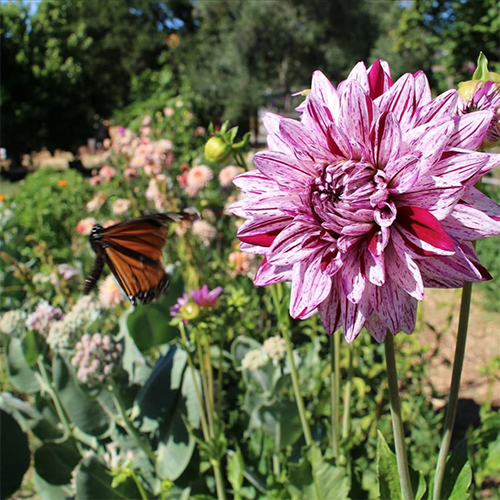- Visual aid: Structure and Function – PDF
- Hand lenses
- Pencils
- Clipboards (one for each student)
- Blank paper
- Biology of a Flower key (one copy for each student) – PDF
- Fresh flowers growing in the garden for drawing
- Student cross-pollinating questions (one copy for each garden teacher) – PDF
- Think-Pair-Share questions (one copy for each garden teacher) – PDF





